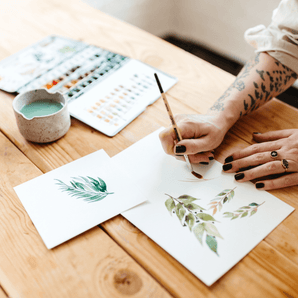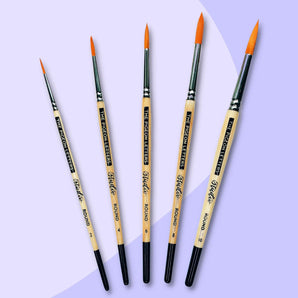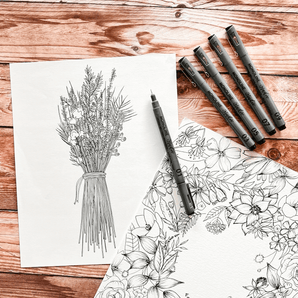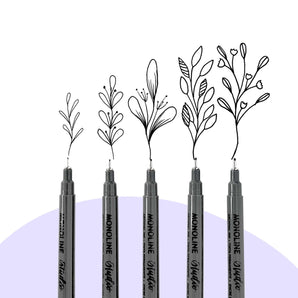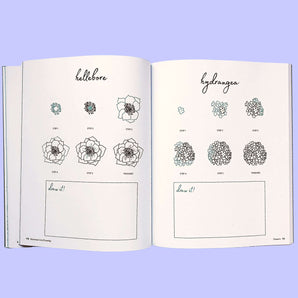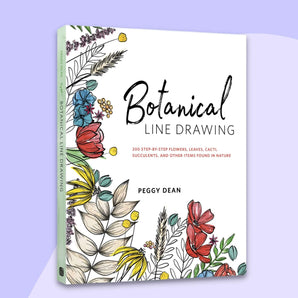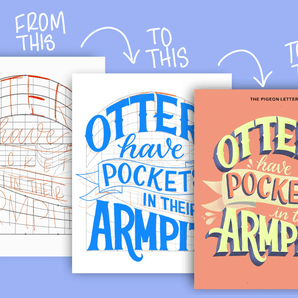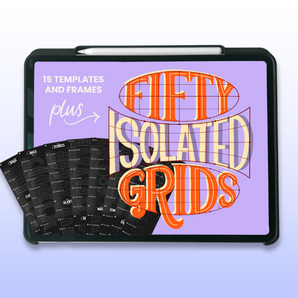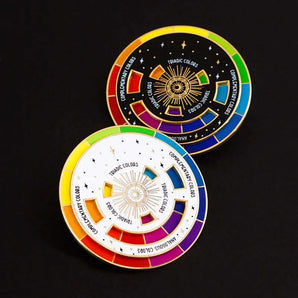In this tutorial, I’ll demonstrate two ways to paint roses using watercolor techniques, focusing on loose blooms. I'm also using Legion's Artist Panels for the first time! Spoiler alert: They're perfect for watercolor. These sturdy panels come pre-mounted on aluminum, making them ideal for framing without extra preparation.
Materials Needed
- Watercolor paper (cold press) or an aluminum watercolor panel
- Watercolor paints (your choice of colors)
- Medium round watercolor brush (I'm using a size 8)
- Water container
- Paper towel for blotting
- Optional: Palette for mixing paint colors
Creating beautiful, loose watercolor florals requires a solid understanding of two key techniques: water control and brush pressure:
- Water control in watercolor: Avoid oversaturating the brush. No matter what paint:water ratio you use, always remove excess water from your brush to avoid pooling. You can do this by dragging the side of your loaded brush on the edge of your palette or water jar, or you can lightly tap the belly of the brush on a towel.
-
Brush pressure: Use the brush tip lightly for delicate strokes and press harder for broader strokes. You can use these two techniques in the same stroke, varying pressure for smooth transitions.
Round brushes are created with the ability to execute thin strokes and thick strokes depending on the amount of pressure you apply. When using the tip of your brush with little pressure, your stroke will be thin. When you apply more pressure, the stroke thickens quite a bit. The larger the brush size, the more real estate you’ll cover.

Let's paint roses!
Step 1: Use plenty of pigment, begin with small C-curves to form the core of the rose
Begin with a saturated paintbrush, rich with pigment. Hold the brush with the tip barely making contact with the paper. Note: If your brush doesn't seem to have a fine tip during this step, be sure to dab excess water off your brush before you make contact with your paper. Begin making small, tight C-curves (similar to horseshoes) with minimal pressure. Be sure to keep small slivers of white space in between your strokes.
Let's talk about C-curves...
C-curves are a core brushstroke in watercolor that make it easier to create the soft, natural shapes you see in petals and leaves. They’re super helpful for bringing a loose, flowy look to floral paintings and give you a solid base for building up petals and adding dimension.
These strokes mimic the gentle arcs you find in nature, especially in petals and leaves, so they’re great for capturing that soft, delicate feel of flowers. When you layer and repeat C-curves in different sizes and colors, they can start to look like petals wrapping around the center of a flower, which is key for making roses and other blooms look full and feel effortless.

Step 2: Rinse your brush & paint the next layer of petals
Rinse your brush quickly, not thoroughly, though. Remove excess water, then form small, rounded strokes using medium pressure by layering C-shaped strokes around the first strokes you make.
Step 3: Paint thicker petals with more transparency
Rinse your brush again to lighten the pigment and make broader strokes around the core. You'll want to make contact with the strokes from the inner circle at times, which will pull the paint through to the next set of petals. This keeps the rose looking loose and airy.
Remember to keep some white space between some strokes for a looser, more natural look. Additionally, for a better result, avoid creating a “pinwheel” pattern; vary the direction slightly.
Continue this step until your rose is at the fullness you desire.

Step 4: Add pigment to the center of the flower using the wet-on-wet watercolor technique
Go back in to the core of the flower with more pigment and dab a bit in the middle to create a richer center, emphasizing the core's depth.
That's it for your roses! Quick and easy, and the more you practice, the more you'll familiarize yourself with how to get the exact results you want.
Paint watercolor leaves to enhance your watercolor florals
Step 5: Paint leaf stems
Adding leaves while the rose is still wet will give an eye-catching blending effect. I've chosen to go pretty extreme with the contrast, choosing a dark color for my leaves, while the flowers are very light.
You don't have to use the wet-on-wet technique if you don't want your colors to bleed. If you like the effect, however, be sure to drag your leaf stems to the edges of your flowers, using the tip of your brush, while the flowers are still wet. Then let the watercolor do its magic.

Step 6: Paint leaves onto your stems
After using the tip of your brush to paint a thin stem, use a zigzag stroke to paint expressive, textured strokes that have a textured, organic feel.

Step 7: Paint longer, elegant leaves
You can combine light pressure and full pressure in the same stroke to create a thick stroke that gradually thins out into a point. This is how we’ll form our leaves. Once that feels comfortable, you can start to slightly curve the stroke to make one side of the leaf, then repeat on the other side to make a fuller figured leaf. You can opt to add some interest by leaving a tiny white space in the center to act as a loose representation of the leaf’s vein.







